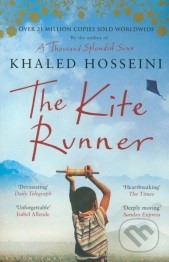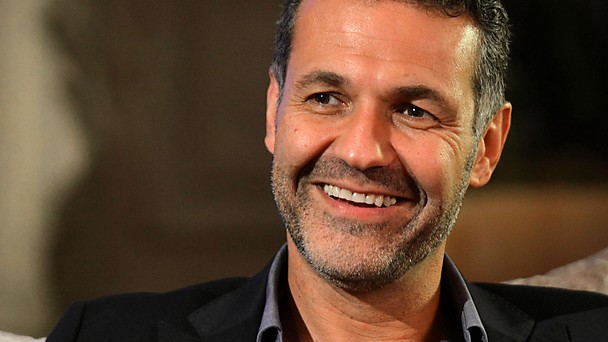
This project promotes open access materials and has been funded with support from the European Commission - Erasmus+ program. These materials reflect the views only of the author, and the Commission cannot be held responsible for any use which may be made of the information contained therein.
[Project Number: 2016-1-HR01-KA201-022159]
![]()
Book title
The perks of being a wallflower
Author
Stephen Chbosky

Bibliographic information
Publisher: Simon and Schuster Australia Sydney
ISBN: 978-1-84739-407-1
Links (adaptations, reviews, full texts etc.)
- https://www.amazon.com/Perks-Being-Wallflower-Stephen-Chbosky/dp/1451696191
- http://www.goodreads.com/book/show/22628.The_Perks_Of_Being_A_Wallflower
Theme
Friends help shape your identity
Short summary
Fifteen-year old Charlie lost his friend who committed a suicide. He is anxious of starting high school alone and he starts to write letters to a stranger. At school, Charlie finds a friend and mentor in his English teacher, Bill. After meeting a classmate Patrik and his sister Sam he overcomes shyness and they have become two of Charlie's BFFs. During the course of the school year, Charlie has his first date and his first kiss, he deals with bullies, he makes friends, loses them, and gains them back. Charlie has a relatively stable home life. Unfortunately, a disturbing family secret that Charlie has repressed for his entire life surfaces at the end of the school year. Charlie has a severe mental breakdown and ends up hospitalized. Charlie's final letter closes with feelings of hope.
Why is the story appropriate for the targeted groups of RSP readers?
- it reflects readers´ interests
- the recommendation and the report emerged from the survey results
What are the distinguished readers interests reflected by this book/story?
-
Why is this story motivational for the pupils?
"The story deals with problems of a teenager who has to face difficult situations. Anxiety and depression are common among teenagers and the book can be motivational and can help teenagers to understand that friendship and family are essential when trying to find a solution."
Is there a historical, political, multi/inter cultural, migrant or similar context recognized in this book/story?
No.
Is there a principle of inclusion reflected in this book/story and does it promotes understanding of cultural diversities and heritage?
It has the principle of inclusion. It promotes understanding of belonging. It emphasizes the importance of being part of the school society and the importance of the role of the families.
Title of Activity
The kite runner
Description of educational activity
Duration: 45 minutes
Pupils’ age: 15-19
Organization of the class of pupils: group work
The aim of the lesson: The aim of the activity is to develop reading literacy of pupils, to support their reading skills, to use their competencies to analyse and compare source texts, to reinforce their language skills when verbalizing their findings, to develop their vocabulary. The ability to present their findings, their opinions and the ability to accept opinions of the other members of the group are important here.
The aim of the activity is to be able to understand the chosen excerpts from the book, to understand the nature and depth of the excerpts from the book. To be able to find connections between the book and the real world. To be able to analyse and accept multicultural differences between the countries. One of the aims is to improve the analytical thinking of our students and to support the tolerance of other cultures and nations.
Support materials:
Some short excerpts of a book are chosen, e.g. 3 of 4 (see appendix 1) Each student is given all of them. The excerpts which show a personality of characters or socio-political situation are appropriate. Because the story takes place in Afghanistan, a few questions about a current situation in the country can be prepared. It is advisable to prepare some information about the author of the book.
- First excerpt: page 26 - 27 (There was a pomegranate tree………. Enough for a harmless prank.)
- First excerpt: 43-44 (I wished I too had some kind of scar ………..Because that was the winter that Hassan stopped smiling.)
- Third excerpt: 100-101 (But it rained the afternoon Baba took Ali……..that the life I had known since I´d been born was over)
Activities:
- The author and the book are introduced. The texts are handed out.
- Each text is read out loud. After each part there is a discussion. Students are explained some possible problematic parts either lexical or connected with the meaning (e.g. loans). All the texts are analysed.
- After that students are divided in to six groups. Each group is given a different task, A0 piece of paper and colourful markers. The results of their findings are written down on the pieces of paper
Tasks for different groups:
First group - Annotation
Students have to write a summary of the story (excerpts). They try to create an annotation of the book based on the excerpts.
Second group – Portraits
The aim is to work out characteristics of the characters mentioned in the excerpts. They have to find key words which characterise the characters and to think about relationships between them and define them.
Third group – Connector
This group tries to find the connection of the story with the outside world, so everything that connects the story with the outside world. Students have to find out the time/period when the story takes place, socio-historical events which could influence the story and to think about the author´s link to the story.
Fourth group – Word masters
This group tries to find the words or phrases which are new, unknown for students or the words which are for some reasons interesting for them. They write them down and explain their choice. They also register the paragraph, line in which they found the word.
Fifth group – Interesting passages
Students try to find the passages which are interesting for them and explain why they chose them. They may be the passages which contain information which surprised students, which students consider to be important or funny. Students try to describe emotions awaken by those passages.
Sixth group – Cultural context
The group think about the cultural differences between the country they live in and the country where the story takes place. They explain the differences. The Internet can be used here.
- After the time limit the individual groups present their results. Students can ask the present group questions or they can add some information. In the end a teachers sums up all the findings.
Evaluation and assessment method:
- Throughout the lesson, ensure that your students are backing up their choices with accurate supporting details.
- Teacher's observations of student preparedness, student work samples, and participation in group activities.
Effect of the activity on RSP reading:
Practices that support students´ choice, collaboration, and shared control of learning outcomes can be linked to self-expressed interest in reading and engaged reading behaviours.
Teachers can organize reading instruction to develop self-efficiency, competence, and engagement in teenage students.
Connection to curriculum
Grade: 3rd and 4th grade of bilingual studies
Bilingual curriculum: The study of literature is focused during the second year on reading comprehension of literary texts which are more serious and are dealing with deeper ideas, e.g. multiculturalism, intolerance. The students should be able to understand the influence of the author´s cultural background on the story. The aim of the curriculum is to teach students to work with the text, to analyse the texts and to understand the importance of the cultural and historical backgrounds. Understanding texts, weighing their merits, and utilizing the information they offer are skills that teenagers draw on throughout the curriculum.
Knowledge:
- Students understand a text being read.
- Students find characters in the text and they differentiate supporting characters from the main character.
- After reading the excerpts they can identify the main characteristics of the characters.
- They identify the narrator of the story.
- They identify the topic of the excerpts.
- They select information.
Skills:
- Students analyse texts.
- They work with different sources of information.
- They search for and classify information.
- They can identify and interpret correctly the feelings of the characters in the books
- They can put the particular excerpts in the correct order according to some links.
- They are able to work in groups.
- They can create a characteristic of a character based on the excerpts.
- They can complete the tasks successfully
Competences:
- They can identify and interpret correctly the feelings of the characters in the books
- They are able to work in groups and individually, too.
- They can accept other members of the group
- They accept and understand the cultural differences between the nations and cultures
- They can understand the emotions of the characters, they are emphatic.
Bibliographic reference to be used during the activity
Khaled Hosseini
The Kite Runner Publisher: Bloomsbury
ISBN: 9781408824856
Page count: 324
Year of issue: 2011

Digital sources
A number of adaptations were created following publication, including a 2007 film of the same name, several stage performances, and a graphic novel.
http://www.imdb.com/title/tt0419887/
Graphic novel: https://mrkmpsc.files.wordpress.com/2012/04/the-kite-runner-graphic-novel.pdf
Results
The expected outcomes of the lesson are:
- The students will be able to understand through different cultures, they will be able to compare cultures, cultural elements, traditions and hence they will be able to understand the text from different perspectives. The ability to develop demonstrations will be enhanced.
- To connect ideas and themes across texts.
- To offer observations, make connections, speculate, interpret, and raise questions in response to the excerpts.
Recommendations
Both the teaching method and the text can help in increasing students’ interest in reading. This text promotes two male characters but from a different cultures and they belong to different social classes. The teacher monitors the students so as to make sure they cooperate effectively. The volume of given fragments of books can be adapted to the potential of a group - fragments can be shorter - by cutting less important paragraphs, or be expanded to additional fragments of the same novel.
Book title
The Kite runner
Author
Khaled Hosseini

Bibliographic information
Publisher: Bloomsbury
ISBN:9781408824856
Links (adaptations, reviews, full texts etc.)
- https://www.goodreads.com/book/show/77203.The_Kite_Runner
- http://khaledhosseini.com/books/the-kite-runner/synopsis/
Theme
A book about friendship, war, love
Short summary
It is a heart-breaking story of the unusual friendship between a wealthy boy and the son of his father’s servant, The Kite Runner is a novel set in a country that is in the process of being destroyed. It is about the power of reading, the price of betrayal, and the possibility of redemption; and an exploration of the power of fathers over sons—their love, their sacrifices, their lies.
Why is the story appropriate for the targeted groups of RSP readers?
- It reflects readers´ interests
- The recommendation and the report emerged from the survey results
- reflects political/historical moment
- it promotes understanding of cultural diversities and heritage
- refers to actual migrant situation
What are the distinguished readers interests reflected by this book/story?
-
Why is this story motivational for the pupils?
The story describes two types of relationship - father and son, friendship between two boys from different classes set in the time when a war starts and people lose everything. The book teaches student about the power of friendship and the price of betrayal. Students are encouraged to understand the reason why some people are forced to leave their country.
Is there a historical, political, multi/inter cultural, migrant or similar context recognized in this book/story?
Yes - the main character is forced to leave his country because of the war in his country and has to cope with a new situation and culture.
Is there a principle of inclusion reflected in this book/story and does it promotes understanding of cultural diversities and heritage?
The book shows us the importance of the family and friends in our life. It shows us how important our culture and identity are for all of us.
Title of Activity
The fun they had
Description of educational activity
Duration: 90 minutes
Pupils’ age: 15-19
Organization of the class of pupils: group work
The aim of the lesson: The aim of the activity is to develop reading literacy of pupils, to support their reading skills, to use their competencies to analyse the source text, to compare the present based on their experience and the future based on the text, to reinforce their language skills when verbalizing the results of their work.
Support materials:
- A collage of pictures representing different books.
- A short story – The fun they had. Each student is given a copy of it.
- A sheet of paper, pencils, colour pencils for each group.
Activities:
- Warm up activity (competition) – students work in groups. Each group is given a collage of pictures representing different books. Their task is to find as many books as they can.
- Fire - Kristine Cashore
- Harry Potter and the cursed child – J.K.Rowling
- The fault in our stars – John Green
- The catcher in the rye – J.D. Salinger
- The hunger games – Suzanne Collins
- The maze Runner – James Dashner
- City of bones – Cassandra Clare
- Red Queen – Victoria Aveyard
- Throne of glass – Sarah J. Maas
- The kite runner – Khaled Hosseini
- Twilight – Stephanie Meyer
- A clockwork orange – Anthony Burgess
- The Hobbit – J.R. Tolkien
- Ann of Green Gables ( - L.M. Montgomery)
- Lord of the flies – William Golding
- Paper towns – John Green
- Thirteen reasons why – Jay Asher
- The princess diaries series – Meg Cabot
- The chocolate war – Robert Cormier
- Stardust – Neil Gaiman
- Prince of Thorns – Mark Laurence
- Metro 2033 – Dimitry Glukhovsky
- Precious stones – Kerstin Gler
- Little women – Louisa May Alcott
- The last wish – Andrzej Sapkowski
- The sun is also a star – Nicola Yoon
- The picture of Dorian Gray – Oscar Wilde
- Inkheart – Cornelia Funke
- A thousand splendid suns – Khaled Hosseini
- The texts are handed out. The students read the short story.
- The students discuss the story which shows us how the future education will probably look like. They can express what they like or do not like about this type of education
- After that students are divided in to groups. Each group is given a piece of paper and colourful markers. Their task is to draw a comic. The students will set the characters from the story in to the present school. They will try to depict their feelings about the present school system.
- The students will present the results of their work.
Connection to curriculum
Grade: 2nd grade of bilingual studies
Bilingual curriculum: The study of literature is focused during the second year on reading comprehension of literary texts which are based on the interests of the students which involves fantasy, too. The aim of the curriculum is to teach students to work with the text, to analyse the texts. Understanding texts, weighing their merits, and utilizing the information they offer are skills that teenagers draw on throughout the curriculum.
Knowledge:
- Students understand a text being read.
- Students find characters in the text and can describe them
- After reading the story they can identify the advantages and disadvantages of the present and future school system.
- They select information.
Skills:
- Students analyse the text.
- They work with different sources of information.
- They search for and classify information.
- They can identify and interpret correctly the feelings of the characters in the story
- They are able to work in groups.
- They can create a characteristic of a character based on the story.
- They can complete the tasks successfully
Competences:
- They can identify and interpret correctly the feelings of the characters in the story
- They are able to work in groups and individually, too.
- They can accept other members of the group
- They can understand the emotions of the characters, they are emphatic
Bibliographic reference to be used during the activity
The fun they had
Isaac Asimov
The Best of Isaac Asimov
Sphere, 1973
ISBN13: 9780722112540
336 pages

Digital sources
- https://www.goodreads.com/book/show/2923828-the-best-of-isaac-asimov
- http://www.gs.cidsnet.de/englisch-online/klasse11/asimov_funtheyhad.htm
- http://www.studyrankers.com/2017/01/study-material-and-summary-of-the-fun-they-had.html
Results
The expected outcomes of the lesson are:
- The students will be able to understand the text and to compare the present system of education to the future one.
- To offer observations, make connections, speculate, interpret, and raise questions in response to the text.
Recommendations
Both the teaching method and the text can help in increasing students’ interest in reading. This text describes the possible future system of education and can help students to discuss its positives and negatives.
The teacher monitors the students so as to make sure they cooperate effectively.
Contact
X gimnazija ''Ivan Supek''
Ul. Vjekoslava Klaića 7
10000
Zagreb
E-mail: partners@handbook4rspreaders.org










